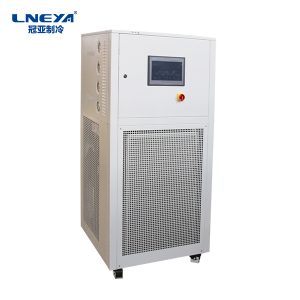Advantages of laboratory low-temperature circulators

The laboratory low-temperature circulator can simultaneously provide constant temperature and current refrigeration, heating, and temperature control equipment. The laboratory low-temperature circulator has a reasonable structure, simple operation, and good stability.
1. The laboratory low-temperature circulator uses a compressor for refrigeration, which consumes energy and improves the exhaust temperature. The refrigerant then exchanges heat with the surrounding medium under the right conditions, transferring the heat to the surroundings. If adiabatic expansion is carried out again, the temperature will decrease.
2. The laboratory low-temperature circulator absorbs isothermal heat from high-temperature objects through an evaporator to reduce the temperature of the object to be cooled. This cycle is continuously carried out to achieve the purpose of cooling. The design of the laboratory low-temperature circulator refrigeration system uses energy regulation technology. Effective treatment methods can not only ensure the normal operation of the refrigerator, effectively control the energy consumption and cooling capacity of the refrigeration system, reduce the operating cost of the experimental box refrigeration system, and achieve a more economical state.
3. The laboratory low-temperature circulator absorbs the heat of the object to be cooled from the evaporator and evaporates it with steam. The compressor continuously extracts the steam generated by the evaporator.
4. The high-temperature and high-pressure steam compressed by the laboratory low-temperature circulator is sent to the condenser, where the cooling medium (such as water, air, etc.) releases heat and condenses into a high-pressure liquid. The pressure is reduced through a throttling mechanism to enter the evaporator. Evaporate again, absorb the heat from the cooled object, and circulate in this way.
5. After the laboratory low-temperature circulator mechanism heats up, the refrigerant changes its flow through a four-way valve. The flow direction of the refrigerant is exactly opposite to the refrigeration process. The refrigerant first passes through the evaporator, then returns to the condenser, and then returns to the compressor.
Recommandations connexes
-
Precautions for cooling and heating during operation of various reactors
932In many laboratories, various reaction vessels of chemical companies are indispensable reaction vessels, and its operating temperature: -80°C-250°C. The laboratory reactor works at normal temperature, and cooling water must be passed normally to a...
Voir les détails -
Conception d'une boîte de test de vieillissement des puces à haute et basse température
1074La boîte de test de vieillissement à haute et basse température de la puce s'applique à l'industrie de test à haute et basse température de la puce. Les schémas de conception fournis par les fabricants de boîtes de test de vieillissement à haute et basse température des différentes puces sont différents...
Voir les détails -
Description of the principle and mode of industrial water chiller refrigeration cycle
1298Anyone who knows about industrial waterchillers should know that it uses compressors to achieve the cooling effect.So, how does it work when refrigerating?1. Vapor compression refrigeration cycle.After cooling and pressurizing the vaporfrom the...
Voir les détails -
Pourquoi les machines d'emballage et de triage des semi-conducteurs doivent-elles utiliser des refroidisseurs ?
1221Dans le processus de test des emballages de semi-conducteurs, en particulier dans le processus de contrôle de la température de la machine de tri (station de sonde de test), l'utilisation de refroidisseurs est principalement basée sur les raisons suivantes : La stabilité et la précision de la température...
Voir les détails
 LNEYA Industrial Chillers Fabricant Fournisseur
LNEYA Industrial Chillers Fabricant Fournisseur













